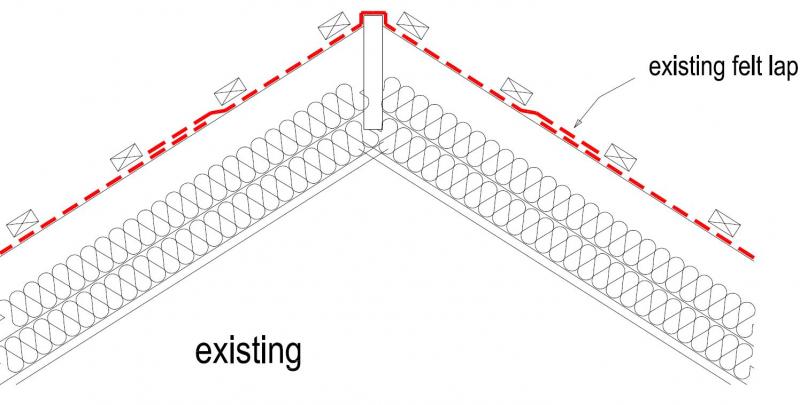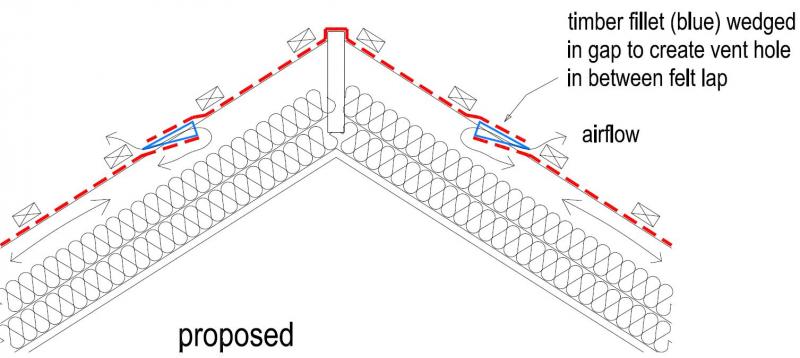Hi,
First post so please be gentle, here goes in my home i have an already functioning attic room which had a fair sized space to the side which i have recently knocked into. The issue is the room is freezing cold during winters, after some investigation i have found that there is absolutely no insulation in the ceiling or roof, there was just plaster boards put on to the rafters and stud walls had a little old style glass wool insulation put in and then rolls of insulation rolled over the floor space where i have knoccked into.
With regards to ventilation: At the moment there are vents or meshing at the eves where i can see daylight through, behind the rafters there is some very old heavy looking felt above which there are the roof tiles. I am planning on purchasing some 1000mm celotex/kinspan to put between the rafters before plater boarding over, at the moment i only have 3x2 for rafters and will have to double them up to provide enough depth.
The issue is is that i have been told i need to leave enough space to ensure enough space is left for ventiltion, how do i do this? is there some kind of spacer or other device/tool i need to use to maintain a gap? and how much of a gap is needed?
On a side note is it worth me reinsulating under the already existing floor as at the moment there is a upto 5-6 inches of old style glass wool which looks very worse for wear, is it worth taking up the floor boards and replacing it with new stuff?
Any advice would be much appreciated, and thanks in advance.
First post so please be gentle, here goes in my home i have an already functioning attic room which had a fair sized space to the side which i have recently knocked into. The issue is the room is freezing cold during winters, after some investigation i have found that there is absolutely no insulation in the ceiling or roof, there was just plaster boards put on to the rafters and stud walls had a little old style glass wool insulation put in and then rolls of insulation rolled over the floor space where i have knoccked into.
With regards to ventilation: At the moment there are vents or meshing at the eves where i can see daylight through, behind the rafters there is some very old heavy looking felt above which there are the roof tiles. I am planning on purchasing some 1000mm celotex/kinspan to put between the rafters before plater boarding over, at the moment i only have 3x2 for rafters and will have to double them up to provide enough depth.
The issue is is that i have been told i need to leave enough space to ensure enough space is left for ventiltion, how do i do this? is there some kind of spacer or other device/tool i need to use to maintain a gap? and how much of a gap is needed?
On a side note is it worth me reinsulating under the already existing floor as at the moment there is a upto 5-6 inches of old style glass wool which looks very worse for wear, is it worth taking up the floor boards and replacing it with new stuff?
Any advice would be much appreciated, and thanks in advance.




